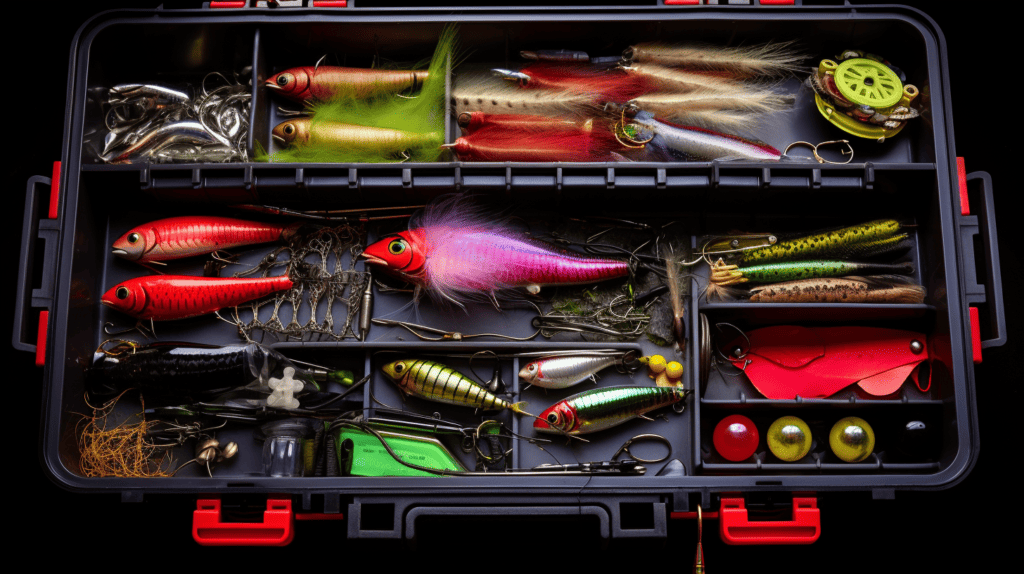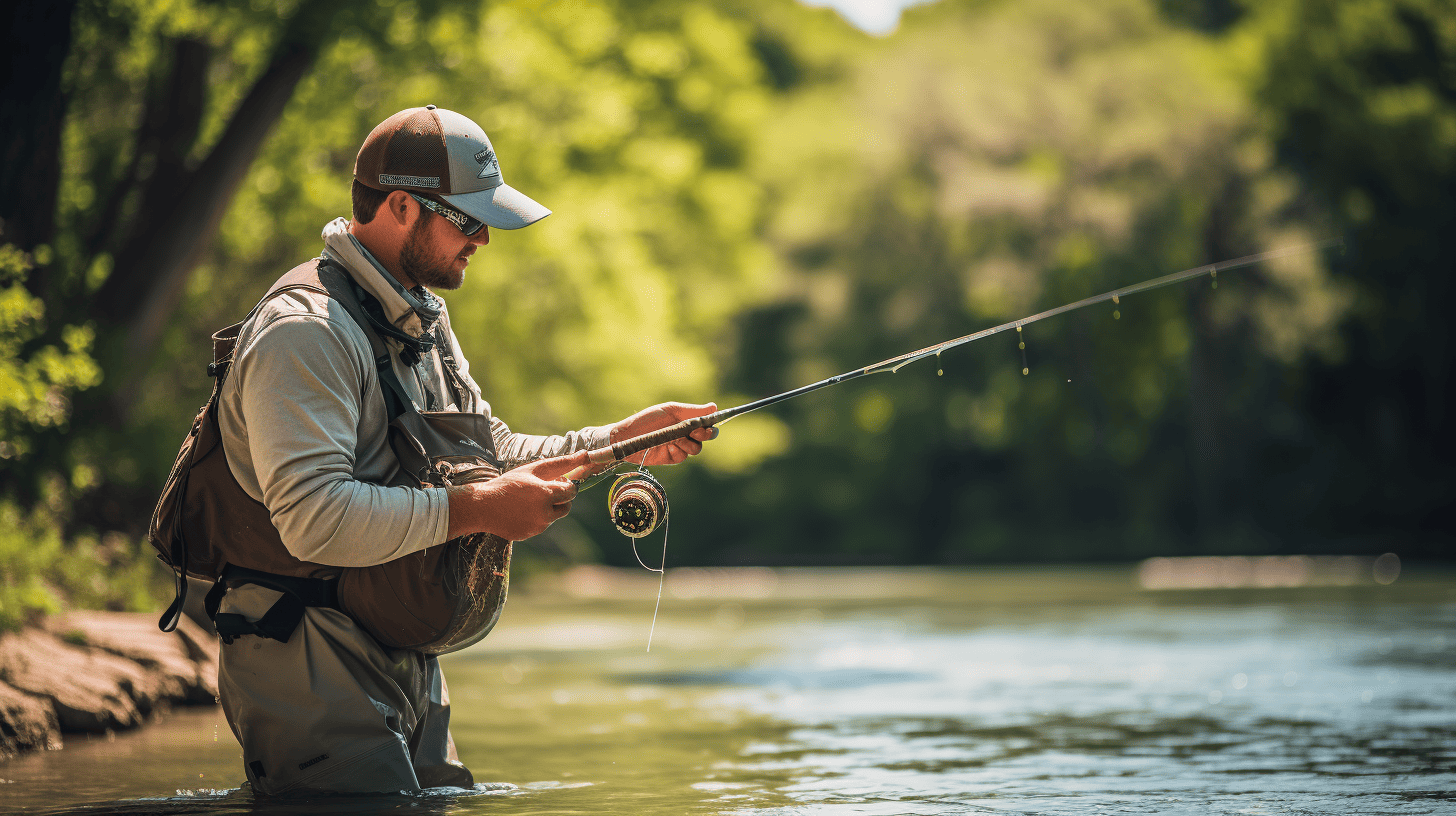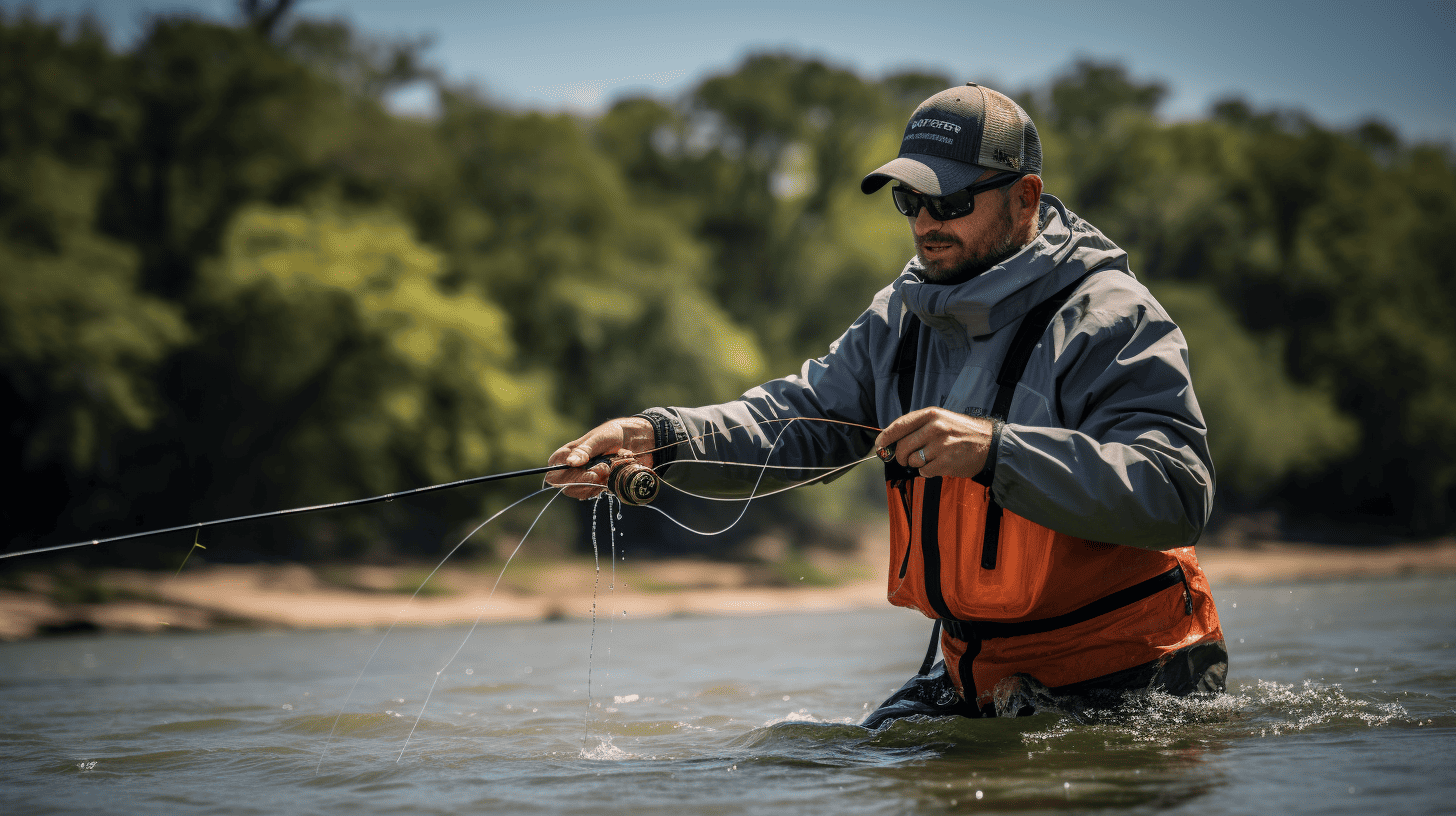Ever felt your fishing trip cut disappointingly short due to unreliable gear? Believe me, I can relate. It turns out, a main culprit is often neglecting our trusty reels. After extensive research and plenty of hands-on experience, I’ve put together 21 must-know tips for mastering the art of fishing reel maintenance.
So let’s get started! Learn how to extend the life of your equipment and set yourself up for countless trouble-free adventures in the great outdoors!
Key Takeaways
- Understand the different types of fishing reels, such as spinning reels and conventional reels, to choose the right one for your needs.
- Learn about key components of a fishing reel, like the handle, spool, bail, and roller bearings, and how to properly clean and maintain them for optimal performance.
- Prepare for maintenance by gathering the necessary supplies and creating a dedicated work area in order to efficiently care for your fishing reel.
- Follow essential tips for organizing your fishing tackle to keep everything in order and easily accessible when you’re ready to go fishing.
Types of Fishing Reels
There are two main types of fishing reels: the spinning reel and the conventional reel.
Spinning Reel
Spinning reels are my go-to choice. They’re easy to use, which makes them great for new anglers. Plus, they come as open-face reels. This provides a wide range of options in size and model, giving diverse selection for all sorts of fishing trips.
But these versatile options also have their own challenges like wind knots and backlashes. So know this before you choose a spinning reel for your next adventure!
Conventional Reel
Let’s talk about the conventional reel. It is a great tool for those who like to fish big. The conventional reel can handle heavy lines and lures with ease. You will find it perfect for casting far and catching big fish.
Using a conventional reel takes some skill, but it’s worth the effort! With this kind of reel, you can cast longer and target larger species of fish. And while you need practice to get good with it, your hard work will surely pay off in time.
Just imagine yourself reeling in that big catch!
Key Components & Their Functions
The reel handle is used to crank and retrieve the fishing line, while the reel spool holds the line. The bail is responsible for releasing and retrieving the line, and roller bearings help facilitate smooth movement during casting and reeling.
Reel Handle
The reel handle is a key piece of your fishing gear. It sits on one side of the reel body. You use it to let out or pull in line by moving it in a round way. It works with the gear system inside the reel.
This lets you bring back line smoothly, without hard tugs or stops and starts. Taking good care of your reel handle helps it work better for longer times.
Reel Spool
The reel spool is an important component of a fishing reel. It’s the part that holds the fishing line and allows it to unwind smoothly when casting. When choosing a reel, it’s important to consider the material of the spool.
Graphite is a good choice for saltwater fishing because it is corrosion-resistant. To keep your spool in good condition, make sure to clean it regularly and remove any dirt or debris that may accumulate.
Lubricating the spool can also help maintain its smooth operation. By taking care of your reel spool, you can ensure that your fishing line unwinds properly and avoid any issues while casting.
Bail & Roller Bearings
The bail and roller bearings are important parts of a fishing reel. The bail acts like a gate for the fishing line on the reel spool. Its job is to keep the line from unwinding when you’re not reeling in or casting out.
Roller bearings, on the other hand, are found in spinning reels and help make sure that everything moves smoothly. They allow the reel to rotate with ease, which is important for good performance.
During maintenance, it’s crucial to lubricate these roller bearings with special reel oil to keep them functioning properly.
Preparing for Maintenance
To prepare for maintenance, gather the necessary supplies and create a dedicated work area.
Choosing the right supplies
To properly maintain your fishing reel, it’s important to choose the right supplies. First, gather all the necessary tools and cleaning supplies before you start. This includes a special white buffing towel for holding loose parts during cleaning.
It’s also crucial to select the appropriate materials for lubricating moving components like bearings, spool spindles, and gears. When applying lubrication, remember to do so lightly to avoid excessive lubrication.
By choosing the right supplies from the beginning, you’ll be well-prepared to keep your reel in top shape.
Establishing a work area
Having a designated work area for fishing reel maintenance is crucial for proper upkeep. It’s important to set up a clean and organized space, free from distractions. Make sure the area is well-lit so you can inspect and clean your fishing reel effectively.
Gather all the necessary tools and materials in one place, including lubricants, cleaning agents, brushes, and small tools like screwdrivers or pliers. By having a dedicated work area, you can establish a routine and systematic approach to maintaining your fishing reel.
Cleaning the Reel
To clean the reel, start by cleaning the handle using a soft cloth and mild soap to remove any dirt or debris. Then, carefully clean the bail and roller bearings with a small brush or toothbrush, making sure to remove any built-up grime.
Finally, take care of the reel spool by rinsing it with freshwater and wiping it dry to prevent rust or corrosion.
Cleaning the handle
To keep your fishing reel in top condition, it’s important to clean the handle regularly. This helps remove dirt, debris, and salt buildup that can affect its performance. To clean the handle, simply unwind it from the reel body.
Use fresh water and a clean rag to wipe away any grime or residue. Pay special attention to any crevices or hard-to-reach areas. Cleaning the handle not only keeps your reel looking good but also ensures smooth operation and prevents damage in the long run.
So don’t forget this important step in your reel maintenance routine!
Cleaning the bail and roller bearings
Cleaning the bail and roller bearings is a vital part of maintaining your fishing reel. These components are responsible for smooth line management and preventing tangles. If not properly cleaned, they can become stiff or sticky, affecting the performance of your reel.
To avoid this, it’s important to clean the bail joint and roller bearings after each fishing trip. Use a small brush or cotton swab to remove any dirt or debris that may have accumulated.
Regular lubrication is also key in ensuring their optimal function and extending the lifespan of your reel. Don’t neglect this step as neglecting maintenance can result in decreased reel performance over time.
Caring for the reel spool
Caring for the reel spool is really important to keep your fishing reel in good shape. Regular maintenance helps make sure it works smoothly and lasts longer. You also need to protect the reel spool from corrosion, which can damage its performance.
To clean the reel spool, use a clean cloth or rag and fresh water. Don’t forget to apply some reel oil too – it keeps the spool lubricated and working properly. Taking care of your reel spool will help you have a great fishing experience every time!

Ultimate Tips for Fishing Tackle Organization
When it comes to organizing your fishing tackle, here are some ultimate tips that can help:
- Take apart your fishing reel and keep the reel boxes for better organization.
- Use clear plastic tackle boxes to store your lures, hooks, and other small accessories.
- Label each tackle box with the specific type of bait or lure it contains.
- Invest in a tackle bag or backpack with multiple compartments for easy storage and transport.
- Store your fishing rods safely by using rod holders or racks.
- Keep all your fishing gear in one designated area, such as a garage or shed.
Adjusting the Reel
To adjust the reel, start by tightening the drag knob to ensure proper tension while reeling in fish. Then, re-spool the line as needed and set the tension or drag according to your fishing needs.
Drag and braking system
Setting the drag tension on your fishing reel is crucial for preventing trophy fish from escaping. If the drag tension is too loose, the fish can pull out line easily and get away.
On the other hand, if it’s too tight, you risk breaking your fishing line. It’s important to find that sweet spot where there’s enough resistance to tire out the fish but not so much that it snaps your line.
Baitcasting reels have a braking system and a spool tension knob that allow you to adjust the spool speed during casting. This helps prevent backlashes and gives you more control over your casts.
Conventional reels also have a braking system that controls how fast the spool spins when casting. Magnetic and centrifugal braking systems are common types of brakes found on conventional reels.
Re-spooling
Re-spooling your fishing reel is an important part of maintenance. It’s crucial to split the spool evenly so you don’t waste money by not having enough line on the reel. Efficient re-spooling techniques can save you time and money.
Don’t forget to rinse the braid on the spool to remove corrosive saltwater, even if your reel is fully sealed. Taking care of this step will help protect your reel from damage in the long run.
So make sure you give proper attention to re-spooling when maintaining your fishing reel.
Setting tension/drag
When adjusting the tension or drag on your fishing reel, it’s important to consider the line strength. A good rule of thumb is to set the drag at around 20% to 30% of the line’s rated breaking strength.
This will give you enough resistance when reeling in a fish without risking snapping your line. For example, if you’re using monoline with a breaking strength of 10 pounds, you’ll want to set your drag between 2 and 3 pounds.
To adjust the tension or drag on a spinning reel, look for the front drag adjustment button. Turning it to the right will tighten the drag and provide more resistance when pulling on the line.
If you find that your drag is slipping when setting the hook, it means that it’s too loose. Try tightening it slightly until you achieve a good balance between giving some play for fighting fish and preventing break-offs.
Troubleshooting Common Issues
Preventing backlashes and maximizing casting distance and accuracy are two common issues that anglers face while using fishing reels.
Preventing backlashes
To prevent backlashes, it’s important to properly adjust the spool tension knob on your fishing reel. Backlashes happen when the spool spins faster than the line coming off the reel, causing tangles and frustration.
By finding the right balance of tension, you can avoid this issue. Also, make sure to cast smoothly and avoid sudden stops or jerks during casting, as these actions can contribute to backlashes as well.
Regularly cleaning and maintaining your fishing reel is also crucial for preventing backlashes. Keep in mind that adjusting both the spool tension knob and handle can help ensure a smooth operation and enjoyable fishing experience without any tangles or frustrations.
Maximizing casting distance and accuracy
To maximize casting distance and accuracy, there are a few important things to keep in mind. First, the length of your fishing rod can play a role. A longer rod, like a 7-foot rod, tends to cast lures farther than a shorter one.
Secondly, the weight of the lure you’re using also matters. Lighter lures generally won’t be casted as far as heavier ones. Cleaning the bearings of your fishing reel is another way to improve casting distance and accuracy.
By keeping them clean and well-maintained, you can reduce friction and achieve better performance. Lastly, adjusting the brakes on your reel can help increase casting distance too.
Using less brakes allows for longer casts. It’s also worth noting that certain types of lures create more wind resistance than others, affecting your ability to cast far accurately.
Lubrication
Proper lubrication is crucial to keeping your fishing reel in top condition. Regularly applying lubrication helps prevent rust, keeps the reel running smoothly, and extends its lifespan.
Keeping the reel maintained
Proper reel maintenance is crucial for keeping your fishing equipment in top-notch condition. Regularly maintaining and lubricating the reel helps ensure smooth operation, reliable performance, and reduces wear and tear.
By cleaning all parts of the reel before applying lubricant, you can effectively remove dirt and debris that may hinder its performance. After applying the lubricant on moving parts, make sure to wipe away any excess to prevent it from attracting more dirt and causing potential issues.
Remember, by regularly maintaining your fishing reels, you can prolong their lifespan and have a successful fishing experience every time you cast your line.
Applying lubrication
Applying lubrication is really important for taking care of your fishing reel. It helps the reel work smoothly and last longer. When it comes to lubrication, you want to use the right kind of oil and grease.
Low viscosity oil is commonly used because it’s thin and flows easily, but it can tend to bleed out over time. You’ll want to apply this oil on the spool bearings and worm gear for optimal functionality.
For the main and pinion gears, a light grease should be used instead of oil. By using the right lubricants in the right places, you can ensure that your fishing reel stays in great shape for all your fishing adventures!
Care and Storage
To properly care for and store your fishing reel, make sure to rinse it with freshwater after each use to remove any salt or dirt buildup. Additionally, inspect your fishing rod regularly for any signs of damage or wear and avoid reeling in swivels through the tip to prevent unnecessary strain.
Lastly, store your hook properly and choose a balanced rod to ensure longevity and optimal performance.
Trout Fishing Tips
Trout fishing can be an exciting and rewarding experience, especially if you are well-prepared. Before heading out, it’s important to inspect your rod and make sure everything is in good condition.
Avoid reeling swivels, hooks, or jig heads through the tip of the rod as this can cause damage. Additionally, proper storage of fishing hooks is crucial to prevent any accidents. When it comes to trout fishing, researching ideal fishing locations is key.
Take the time to check out the qualities of different trout streams for a successful trip. Keep in mind that lake trout are the largest native species in New York State and they have a long lifespan.
Bass Fishing Tips
When it comes to bass fishing, there are some important tips to keep in mind. First, make sure you have the right equipment, including a sturdy rod and reel. It’s also essential to choose the right bait for bass fishing, such as worms or crankbaits.
When casting your line, aim for areas with cover like rocks or submerged vegetation where bass like to hide. Don’t forget about proper technique too – using an underhand cast can help you reach those tight spots.
Lastly, be patient and observant – pay attention to the water conditions and adjust your strategy accordingly. Happy fishing!
Properly storing the reel
To properly store your fishing reel, it’s important to take a few key steps. First, make sure to loosen the drag on the reel before putting it away between fishing trips. This helps prevent any damage that could occur if the drag is left tight for extended periods of time.
Additionally, avoid storing wet reels in closed containers or plastic bags, as this can lead to damage from moisture and humidity buildup. Lastly, be careful when transporting and storing your fishing rods to avoid any potential breakage.
Rods can easily get damaged in vehicle doors, trunks, or tailgates if not handled with care. By following these tips for proper reel storage and rod transportation, you can maintain the performance of your equipment and prevent unnecessary damage.
Conclusion on Fishing Reel Maintenance
Mastering the maintenance of your fishing reel is crucial for maximizing its performance and longevity. By following these 21 essential tips, from regular cleaning to proper lubrication and storage, you can ensure that your reel stays in top condition.
Don’t forget to inspect and handle any issues promptly to prevent further damage. With a well-maintained reel, you’ll be ready to tackle any fishing adventure with confidence!
FAQs on Fishing Reel Maintenance
1. How often should I maintain my fishing reel?
To keep your fishing reel in good condition, it is recommended to perform regular maintenance after each use or at least once every few months.
2. What are some basic tips for maintaining a fishing reel?
Basic tips for maintaining a fishing reel include cleaning it with fresh water after each use, lubricating its moving parts, and storing it in a cool and dry place.
3. Can I use any type of oil or grease for lubricating my fishing reel?
No, it’s important to use specially formulated fishing reel oil or grease as they are designed to withstand the harsh conditions of water and provide optimal lubrication.
4. Do I need special tools to maintain my fishing reel?
While there are specialized tools available for certain tasks, most basic maintenance can be done using common household items such as cotton swabs, toothbrushes, and mild soap.
5. Why is proper maintenance important for a fishing reel?
Proper maintenance helps prolong the lifespan of your fishing reel, ensures smooth operation during casting and reeling in fish, and prevents issues like rusting or seizing up that could affect its performance on the water.





Leave a Reply